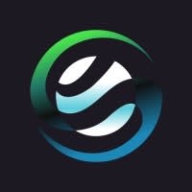

IBM Security QRadar and Morphisec compete in the cybersecurity domain, focusing on SIEM and endpoint protection, respectively. Based on feature set, QRadar may have an upper hand due to its comprehensive analytics and integration capabilities.
Features: IBM Security QRadar provides advanced log management, SIEM capabilities, and application monitoring. It facilitates rapid threat detection through integration of various logs into a single console. Morphisec focuses on endpoint protection, emphasizing deterministic attack prevention and minimal system impact. It features integration with Microsoft Defender and unique memory protection techniques.
Room for Improvement: QRadar needs to enhance incident management, analytics visualization, and streamline logging updates. Integrating with diverse security products remains an area for improvement. Morphisec would benefit from better reporting features and reduced false positives, along with enhanced client communication and cloud feature deployment.
Ease of Deployment and Customer Service: IBM Security QRadar offers hybrid deployments and a scalable solution for large environments, though customer service response times could improve. Morphisec allows flexible deployment across cloud and on-premises environments with simpler architecture, making it easily deployable and supported competitively.
Pricing and ROI: IBM Security QRadar is a premium product, with significant ROI for leveraging its capabilities, though viewed as high-priced. Morphisec offers cost-effective pricing, emphasizing affordability and robust endpoint security, making it appealing for budget-conscious businesses through a straightforward licensing structure.
| Product | Market Share (%) |
|---|---|
| IBM Security QRadar | 1.5% |
| Morphisec | 0.7% |
| Other | 97.8% |


| Company Size | Count |
|---|---|
| Small Business | 90 |
| Midsize Enterprise | 38 |
| Large Enterprise | 105 |
| Company Size | Count |
|---|---|
| Small Business | 5 |
| Midsize Enterprise | 8 |
| Large Enterprise | 8 |
IBM Security QRadar (recently acquired by Palo Alto Networks) is a security and analytics platform designed to defend against threats and scale security operations. This is done through integrated visibility, investigation, detection, and response. QRadar empowers security groups with actionable insights into high-priority threats by providing visibility into enterprise security data. Through centralized visibility, security teams and analysts can determine their security stance, which areas pose a potential threat, and which areas are critical. This will help streamline workflows by eliminating the need to pivot between tools.
IBM Security QRadar is built to address a wide range of security issues and can be easily scaled with minimal customization effort required. As data is ingested, QRadar administers automated, real-time security intelligence to swiftly and precisely discover and prioritize threats. The platform will issue alerts with actionable, rich context into developing threats. Security teams and analysts can then rapidly respond to minimize the attackers' strike. The solution will provide a complete view of activity in both cloud-based and on-premise environments as a large amount of data is ingested throughout the enterprise. Additionally, QRadar’s anomaly detection intelligence enables security teams to identify any user behavior changes that could be indicators of potential threats.
IBM QRadar Log Manager
To better help organizations protect themselves against potential security threats, attacks, and breaches, IBM QRadar Log Manager gathers, analyzes, preserves, and reports on security log events using QRadar Sense Analytics. All operating systems and applications, servers, devices, and applications are converted into searchable and actionable intelligent data. QRadar Log Manager then helps organizations meet compliance reporting and monitoring requirements, which can be further upgraded to QRadar SIEM for a more superior level of threat protection.
Some of QRadar Log Manager’s key features include:
Reviews from Real Users
IBM Security QRadar is a solution of choice among users because it provides a complete solution for security teams by integrating network analysis, log management, user behavior analytics, threat intelligence, and AI-powered investigations into a single solution. Users particularly like having a single window into their network and its ability to be used for larger enterprises.
Simon T., a cyber security services operations manager at an aerospace/defense firm, notes, "The most valuable thing about QRadar is that you have a single window into your network, SIEM, network flows, and risk management of your assets. If you use Splunk, for instance, then you still need a full packet capture solution, whereas the full packet capture solution is integrated within QRadar. Its application ecosystem makes it very powerful in terms of doing analysis."
A management executive at a security firm says, "What we like about QRadar and the models that IBM has, is it can go from a small-to-medium enterprise to a larger organization, and it gives you the same value."
Morphisec integrates seamlessly with platforms like Microsoft Defender, offering signatureless protection against zero-day threats and ransomware. It enhances existing endpoint solutions with minimal maintenance through its set-and-forget deployment, providing heightened security and reduced false positives.
Morphisec strengthens defense strategies by merging memory morphing and signatureless protection to effectively block zero-day attacks and ransomware. It operates efficiently within existing infrastructure, reducing system impact and maintenance needs. Users find its full visibility dashboard invaluable. Despite its strengths, cloud deployment and reporting features can be improved. Stability, alerts, and integration with other systems pose challenges for users, impacting usability and support quality.
What are Morphisec's key features?
What benefits should users consider in reviews?
In security-focused industries, Morphisec is crucial for protecting workstations and servers against sophisticated attacks like ransomware. Its signatureless technology offers early threat detection, while compatibility with existing systems ensures seamless integration, providing advanced protection without additional licensing costs.
We monitor all Endpoint Detection and Response (EDR) reviews to prevent fraudulent reviews and keep review quality high. We do not post reviews by company employees or direct competitors. We validate each review for authenticity via cross-reference with LinkedIn, and personal follow-up with the reviewer when necessary.